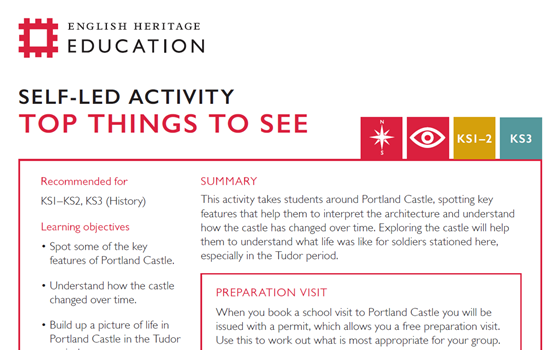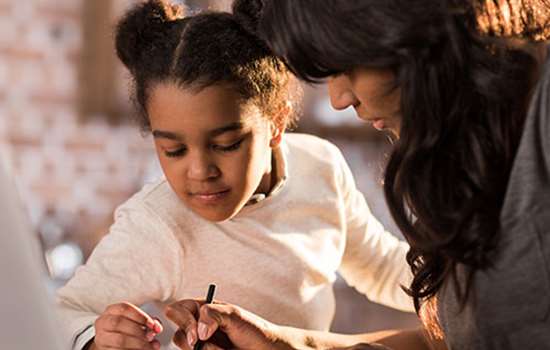Hints and Tips
- Explain different denominations – Religious beliefs and the different denominations that had ascendency at particular times can often be challenging for young people to understand. Take time to work through what each doctrine would have meant in terms of religious observance and the practical impact on people’s lives.
- Remember the multi-causality of events – It can sometimes be easy to slip into simple ‘why?’ questions when exploring these periods, with students offering an overarching assessment before choosing one cause to the detriment of others. Henry VIII’s pursuit of an heir, the Dissolution of the Monasteries, Elizabeth I’s reluctance to marry, or the occurence of the English Civil War can be challenging topics to explore in their full multi-causal colour, but can equally make for the most exciting of enquiries.
- Appreciate the arts – The Tudors and Stuarts offer us literature, poetry, theatre, music, art, architecture, sports and games on a burgeoning scale – a veritable collective of culture to embrace and enjoy.
Suggested Activities
-

Party Like It's 1575 (KS1-KS2) - Kenilworth Castle Teachers' Kit
How would you entertain Elizabeth I during her historic visit to Kenilworth in 1575? Design invitations and decorations and plan your menu and evening entertainment with this activity.
-

DECORATIVE PASTRIES (KS1-2) - BOLSOVER CASTLE TEACHERS' KIT
Impress your guests by designing the perfect decorative pastries for a royal banquet at Bolsover Castle.
-

Portland Castle Top Things to See (KS1-2)
-

Kinmont Willie: A True Story? (KS3) - Carlisle Castle Teachers' Kit
Consider a range of sources relating to the story of Kinmont Willie's escape from Carlisle Castle in 1596. What do you think really happened?
-

Falmouth's Great Fortress (KS1-KS2) - Pendennis and St Mawes Castle Teachers' Kit
Discover the importance of the location and construction of Henry VIII's device forts in Falmouth with this investigative activity.
-

Designing Deal (KS2-KS3) - Deal Castle Teachers' Activity Ideas
Investigate the design, shapes and patterns at Deal Castle and reflect on what makes Henry VIII's coastal forts different to medieval castles.
-

Poetry for a King (KS2-KS3) - Eltham Palace Teachers' Activity Ideas
How do you flatter a king? Learn about how Erasmus's poem praised Prince Henry (the future King Henry VIII) and his father, Henry VII, and write your own.
-

Our King, Our Prisoner (KS2) - Carisbrooke Castle Teachers' Kit
How did Charles I feel during his imprisonment at Carisbrooke Castle? Imagine life as a king in prison using a first-hand account as inspiration in this immersive activity.
-

Civil War: Parliamentarians vs Royalists (KS2-KS3) - Boscobel House Teachers' Kit
Explore the backgrounds, beliefs, and viewpoints of key figures involved in the English Civil War to better understand the two sides of the conflict.
History at Home Live! Henry VIII and the Tudors
Watch History at Home Live! with Ben Shires and our expert Roy Porter as they explore the life and times of Henry VIII and the Tudors.
Who were Henry's six wives? Why did he build so many fortresses? What was the Dissolution of the Monasteries like for monastic communities? Find out the answers to all of these questions and more.
Get to Grips with the Period
By ending the Wars of the Roses, Henry VII established the Tudor dynasty and restricted the power of the aristocracy. From this point, only the monarch would build fortresses. Henry VIII’s device forts (including Deal and St Mawes Castles) protected England against European reaction to religious changes Henry introduced. English Heritage’s collection of monastic ruins highlights the effects of the Dissolution of the Monasteries.
Civil war under Charles I brought major devastation, epic sieges at Pendennis Castle and elsewhere, and the king’s imprisonment at Carisbrooke Castle. The king’s execution led to the creation of the Commonwealth – the only republic in England’s history. The future Charles II narrowly escaped capture near Boscobel House in 1651.
The Restoration of the monarchy in 1660 began a period of continuing scientific advances, but also plague and fire in London and attack by the Dutch. This defeat spurred the building of Tilbury Fort. The continuing religious disputes in England during this period were addressed in 1689 when the Catholic James II was deposed by his Protestant daughter, Mary and her husband William of Orange. Under Queen Anne, the Acts of Union with Scotland made England part of ‘Great Britain’.
Read the Story of England-

TUDORS: RELIGION
The Tudor era witnessed the most sweeping religious changes in England since the arrival of Christianity, which affected every aspect of national life.
-

Tudors: War
The Tudor period saw the gradual evolution of England’s medieval army into a larger, firearm-wielding force supported by powerful ships and formidable gun forts.
-

Stuarts: Architecture
From the grand country houses of the early Stuart period to Christopher Wren's new churches that rose from the ashes of the Great Fire of London.
-

Stuarts: War
How the reorganisation of the Parliamentary army following the devastating Civil Wars of 1642–51 was the beginning of the modern British Army tradition.
Tudors & Stuarts Glossary
Expert Advice
We asked one of our historians for their thoughts on what to remember when teaching the Tudors and Stuarts:
Read more about Teaching HistoryThe Tudor and Stuart periods serve as a bridge between the medieval and modern worlds. This was a time of dramatic and often unsettling change, from the Dissolution of the Monasteries and associated Protestant Reformation, to the breakdown of feudalism, as power became increasingly centred on the the monarchy and the influence of the nobility was diminished. It was a time of hostility between England and Scotland, tempered for a time, when a Scot, James I took the English throne in 1603. It was also a time of civil war, as an increasingly assertive Parliament challenged royal authority, laying the foundations for our constitutional monarchy and parliamentary democracy.
This was also a period of discovery, exploration and scientific endeavour that saw the foundation of the Royal Society and the Royal Observatory at Greenwich. An expanded navy enabled England to challenge Spain, France and the Netherlands to emerge as a dominant maritime power with colonies across the globe. Trade made England wealthier and introduced us to new goods, such as potatoes, tobacco, coffee and tea, but also brought slavery and exploitation of indigenous peoples. At home, fields were enclosed to raise sheep and the first manufactories emerged.
Andrew Hann, Senior Properties Historian
Video Resources
Discover more about the Tudors and Stuarts with our variety of videos.
Meet a Tudor Cook and watch the building of Kenilworth Castle in Minecraft. Find out about the lifestyle of a Stuart aristocrat and uncover why Charles II hid in an oak tree.
-
Kenilworth Castle in Minecraft: Timelapse
-
Life as a Duke: William Cavendish at Bolsover Castle
-
Charles II and the Oak Tree




